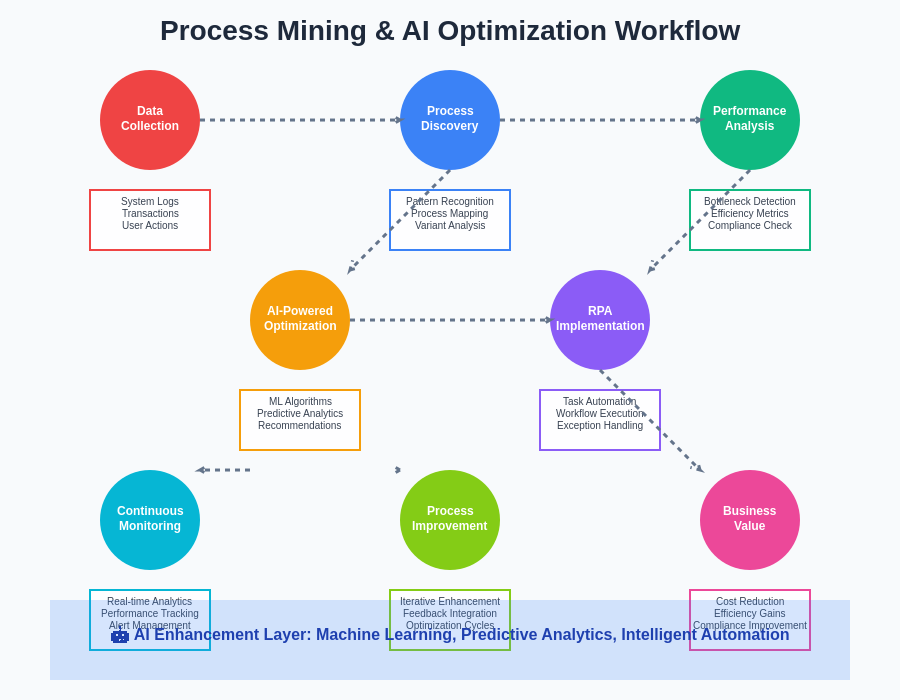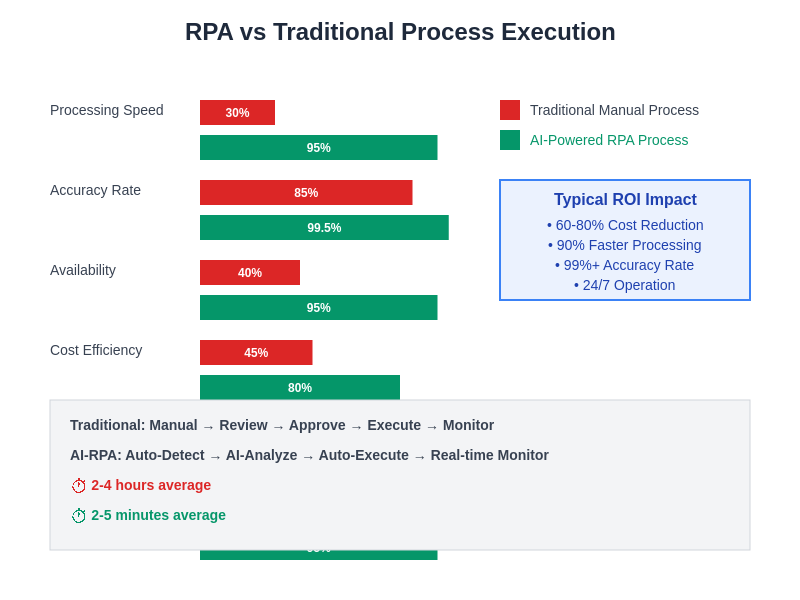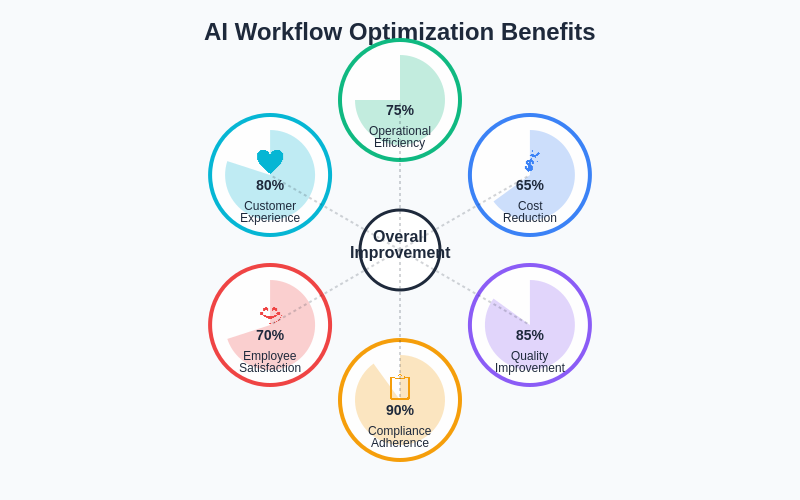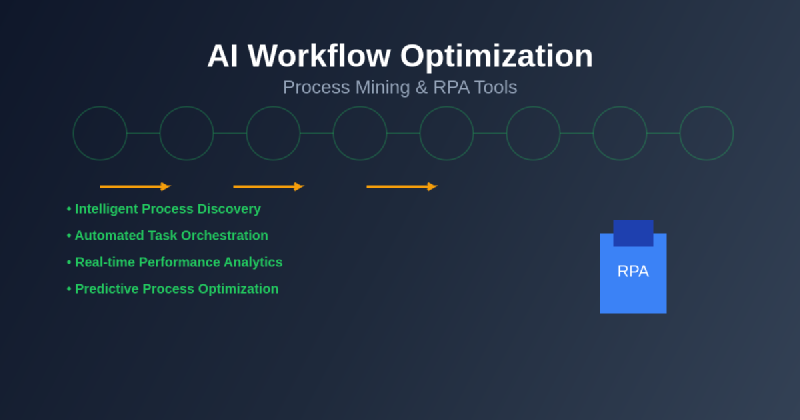The modern business landscape demands unprecedented levels of efficiency, accuracy, and adaptability in operational processes. Organizations worldwide are discovering that traditional manual approaches to workflow optimization are insufficient for competing in today’s rapidly evolving marketplace. The convergence of artificial intelligence, process mining technologies, and robotic process automation has created a powerful ecosystem of tools that can analyze, optimize, and execute business processes with remarkable precision and efficiency, fundamentally transforming how organizations approach operational excellence.
Explore the latest AI automation trends to understand how cutting-edge technologies are reshaping business operations across industries. The integration of AI-powered workflow optimization represents a quantum leap forward in organizational capability, enabling businesses to achieve levels of operational excellence that were previously unattainable through conventional methods.
Understanding AI-Powered Workflow Optimization
AI-powered workflow optimization represents a sophisticated approach to business process improvement that leverages machine learning algorithms, data analytics, and intelligent automation to identify inefficiencies, predict bottlenecks, and implement optimized process flows. Unlike traditional workflow analysis that relies heavily on manual observation and subjective assessment, AI-driven optimization provides objective, data-driven insights that reveal hidden patterns, inefficiencies, and optimization opportunities within complex business processes.
The foundation of AI workflow optimization lies in its ability to process vast amounts of operational data, identify correlations between different process variables, and predict the impact of potential changes before implementation. This predictive capability enables organizations to make informed decisions about process modifications while minimizing risks and maximizing potential benefits. The continuous learning nature of AI systems ensures that optimization recommendations become more accurate and relevant over time as the system accumulates more operational data and feedback.

The comprehensive workflow demonstrates how AI-powered process mining creates a continuous improvement cycle, from initial data collection through advanced optimization and business value realization. This systematic approach ensures that organizations can achieve measurable improvements in operational efficiency while maintaining high standards of quality and compliance.
The Evolution of Process Mining Technology
Process mining technology has emerged as a revolutionary approach to understanding and optimizing business processes by leveraging digital traces left by various organizational systems. Every transaction, every system interaction, and every process step generates digital footprints that can be analyzed to reconstruct actual process execution patterns. This data-driven approach provides unprecedented visibility into how processes actually operate versus how they were designed to function, revealing discrepancies that often represent significant optimization opportunities.
The sophistication of modern process mining platforms extends far beyond simple process visualization. Advanced algorithms can identify process variants, detect compliance violations, predict process outcomes, and recommend specific optimization strategies based on comprehensive analysis of historical process execution data. These capabilities enable organizations to move from reactive process management to proactive process optimization, addressing issues before they impact operational performance or customer satisfaction.
Leverage advanced AI capabilities with Claude for comprehensive process analysis and optimization strategy development. The combination of process mining insights with AI-powered analysis creates unprecedented opportunities for operational excellence and competitive advantage.
Robotic Process Automation Integration
Robotic Process Automation represents the execution layer of AI-powered workflow optimization, providing the capability to implement identified improvements through automated process execution. Modern RPA platforms have evolved from simple task automation tools to sophisticated systems capable of handling complex decision-making processes, integrating with multiple systems, and adapting to changing business conditions. The integration of AI capabilities into RPA platforms has created what industry experts call “intelligent automation” that can handle exceptions, learn from experience, and continuously improve performance.
The strategic value of RPA extends beyond simple cost reduction through labor replacement. Intelligent RPA systems can operate continuously without fatigue, maintain consistent quality standards, and provide detailed audit trails of all process executions. This reliability and transparency enable organizations to improve compliance, reduce operational risks, and achieve service level agreements that would be challenging to maintain with purely manual processes.

The quantitative comparison reveals the substantial advantages of AI-powered RPA implementation across critical performance metrics including processing speed, accuracy rates, availability, cost efficiency, scalability, and compliance adherence. These improvements translate directly into measurable business value through reduced operational costs, improved service quality, and enhanced competitive positioning.
Advanced Process Discovery and Analysis
Contemporary process discovery tools utilize machine learning algorithms to automatically identify and map business processes from system logs, user interactions, and transaction data. These sophisticated analysis capabilities can uncover hidden process variations, identify root causes of delays and inefficiencies, and quantify the business impact of different optimization strategies. The automation of process discovery dramatically reduces the time and resources required for comprehensive process analysis while providing more accurate and objective insights than traditional manual mapping approaches.
Advanced process analysis capabilities include conformance checking that compares actual process execution against designed processes, performance analysis that identifies bottlenecks and optimization opportunities, and predictive analytics that forecast process outcomes under different conditions. These analytical capabilities provide the foundation for data-driven decision making about process improvements and enable organizations to prioritize optimization efforts based on potential business impact.
Intelligent Task Automation and Orchestration
The orchestration of automated tasks within complex workflows requires sophisticated coordination capabilities that can handle dependencies, manage exceptions, and adapt to changing business conditions. Modern intelligent automation platforms provide workflow orchestration engines that can coordinate multiple RPA bots, integrate with existing business systems, and manage complex process flows that span multiple departments and systems.
Intelligent task automation extends beyond simple rule-based automation to include cognitive capabilities such as natural language processing, document understanding, and decision-making based on unstructured data. These advanced capabilities enable automation of knowledge-intensive processes that previously required human intervention, dramatically expanding the scope of processes that can benefit from automation optimization.
Real-Time Process Monitoring and Analytics
The implementation of real-time process monitoring capabilities provides organizations with immediate visibility into process performance, enabling rapid identification and resolution of issues before they impact business outcomes. Advanced monitoring systems utilize AI algorithms to detect anomalies, predict potential failures, and automatically trigger corrective actions when necessary. This proactive approach to process management significantly reduces the impact of process disruptions and maintains consistent service levels.
Real-time analytics capabilities extend beyond simple performance monitoring to include predictive insights about future process behavior, resource utilization forecasting, and optimization recommendations based on current operating conditions. These capabilities enable organizations to make dynamic adjustments to process execution strategies, resource allocation, and capacity planning based on actual operational data rather than static assumptions.
Enhance your research and analysis capabilities with Perplexity to stay informed about emerging trends and technologies in workflow optimization and process automation. The rapidly evolving landscape of AI-powered process optimization requires continuous learning and adaptation to maintain competitive advantage.
Integration with Enterprise Systems
The effectiveness of AI workflow optimization depends heavily on seamless integration with existing enterprise systems including ERP platforms, CRM systems, database management systems, and specialized industry applications. Modern integration capabilities utilize APIs, middleware platforms, and intelligent connectors that can adapt to different data formats, communication protocols, and security requirements. This comprehensive integration capability ensures that workflow optimization initiatives can leverage existing technology investments while providing comprehensive process visibility across the entire organization.
Advanced integration capabilities include real-time data synchronization, event-driven process triggering, and intelligent data transformation that enables seamless communication between disparate systems. These integration capabilities eliminate information silos that often hinder process optimization efforts and provide a unified view of organizational processes that spans multiple systems and departments.
Security and Compliance in Automated Workflows
The automation of business-critical processes requires robust security frameworks that protect sensitive data, ensure access control, and maintain comprehensive audit trails. AI-powered workflow optimization platforms implement advanced security measures including encryption, role-based access control, and anomaly detection that can identify potential security threats or compliance violations in real-time. These security capabilities are essential for maintaining trust and regulatory compliance in automated process environments.
Compliance management in automated workflows involves continuous monitoring of process execution against regulatory requirements, automatic generation of compliance reports, and immediate alerting when potential compliance issues are detected. The precision and consistency of automated compliance monitoring significantly reduces compliance risks while reducing the administrative burden associated with manual compliance management processes.
Performance Measurement and Optimization
Effective workflow optimization requires comprehensive performance measurement capabilities that can quantify the business impact of process improvements and identify additional optimization opportunities. Modern performance measurement systems utilize AI algorithms to establish baseline performance metrics, track improvement trends, and predict future performance under different operating conditions. These measurement capabilities provide the objective evidence needed to justify continued investment in optimization initiatives and guide future improvement efforts.
Advanced performance optimization capabilities include automated A/B testing of different process configurations, machine learning-based optimization of process parameters, and continuous improvement recommendations based on accumulated operational data. These capabilities enable organizations to achieve ongoing performance improvements rather than one-time optimization gains, creating sustainable competitive advantages through superior operational efficiency.
Scalability and Enterprise Deployment
The deployment of AI workflow optimization solutions across large enterprises requires scalable architectures that can handle varying workloads, support multiple concurrent processes, and maintain consistent performance under different operating conditions. Modern platforms utilize cloud-native architectures, containerization technologies, and distributed computing capabilities to provide the scalability needed for enterprise-wide deployment while maintaining cost-effectiveness and operational flexibility.
Scalability considerations include not only technical performance but also organizational change management, user training, and governance frameworks that ensure consistent implementation across different business units. Successful enterprise deployment requires comprehensive planning, staged implementation approaches, and continuous support mechanisms that enable organizations to realize the full benefits of workflow optimization investments.
Future Trends and Emerging Technologies
The future of AI workflow optimization will be characterized by even more sophisticated artificial intelligence capabilities including advanced natural language processing, computer vision, and quantum computing applications that will enable optimization of increasingly complex and knowledge-intensive processes. Emerging technologies such as digital twins, augmented reality, and blockchain integration will provide new opportunities for process optimization and operational excellence.
The continued evolution of AI capabilities will enable autonomous process optimization where systems can independently identify, test, and implement process improvements without human intervention. This autonomous optimization capability will represent the ultimate evolution of workflow optimization technology, enabling organizations to achieve continuous operational improvement through self-optimizing systems that adapt to changing business conditions and requirements.
The integration of AI workflow optimization with broader digital transformation initiatives will create synergistic effects that amplify the benefits of individual optimization efforts. Organizations that successfully integrate AI-powered process optimization with other digital transformation technologies will achieve competitive advantages that are difficult for competitors to replicate, establishing sustainable leadership positions in their respective markets.

The comprehensive benefits analysis demonstrates the multifaceted value proposition of AI workflow optimization, showing significant improvements across operational efficiency, cost reduction, quality enhancement, compliance adherence, employee satisfaction, and customer experience. These interconnected benefits create a positive feedback loop that drives continuous organizational improvement and sustainable competitive advantage.
Implementation Strategy and Best Practices
Successful implementation of AI workflow optimization requires a strategic approach that considers organizational readiness, technology infrastructure, and change management requirements. Best practices include starting with pilot projects that demonstrate clear value, establishing robust governance frameworks, and developing comprehensive training programs that enable organizations to maximize the benefits of optimization investments.
The implementation strategy should include clear success metrics, regular progress assessments, and continuous improvement mechanisms that enable organizations to adapt their optimization approaches based on operational experience and changing business requirements. This iterative approach to implementation maximizes the likelihood of success while minimizing risks associated with large-scale technology deployments.
Disclaimer
This article is for informational purposes only and does not constitute professional advice. The views expressed are based on current understanding of AI workflow optimization technologies and their applications in business process improvement. Readers should conduct their own research and consider their specific requirements when implementing AI-powered workflow optimization solutions. The effectiveness of optimization initiatives may vary depending on specific organizational contexts, technology infrastructure, and implementation approaches.
